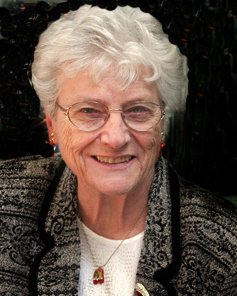
The following article is part of the Diamond Club Member group that began in the January 7, 1943, issue of the Rock County Star Herald. Members of this group consist of persons of age 75 and older.
The following appeared in The Rock County Herald on September 16, 1943.
The Civil War to most of the residents of Rock county was another war fought in the south over the question of slavery. Only a scattered few have forefathers who were in uniform during the conflict, and only a small number, perhaps, have seen Civil War battlegrounds.
To Mr. and Mrs. Abraham Scott, Hardwick, however, the Civil War represents quite a bit more than a chapter from an American history book, as they were born and reared almost within seeing distance of where the final battle, the battle of Gettysburg, was fought. Both had relatives who fought in the war, and from them heard many eye-witness accounts of Civil War days.
Mr. Scott was born July 7, 1886, in Adams county, Pa., the son of Joseph R. and Susan Weikert Scott, while Mrs. Scott, who before her marriage was Lou Manahan, was born Feb. 10, 1869, at Westminister, Carroll county, Md., the daughter of Mr. and Mrs. Francis Manahan.
Both Mr. Scott’s father and Mrs. Scott’s father fought on the side of the Union army. Had they lived several miles farther south, they would have been in Confederate territory, for their homes were but a short way from the Mason-Dixon line that divided the slave states from the free states.
The present selective service system is marked advancement over the system used in Civil War days, Mrs. Scott points out. At that time, one of the commanding officers came to their home, took her father and two uncles out of bed, and placed them on active duty without a bit of training. Her father escaped unhurt, but her uncle was killed, and the other seriously wounded.
For years afterward, when Mr. and Mrs. Scott were children, the battle field near Gettysburg was left untouched. Later it was made into a memorial park and is now visited by thousands of people annually during normal times.
When Mrs. Scott was 13 years old, her father moved to a farm adjoining the one owned by Mr. Scott’s father. The land there was rolling, and orchards dotted the countryside. Wheat was the main cash crop, although some oats and corn was raised for feed.
Both Mr. and Mrs. Scott began working early in life. Mr. Scott spent much of the time on the farm, as also did Mrs. Scott. She states that she learned how to plant corn by hand, dropping three kernels in each hill. She went to work in a canning factory, and recalls that she earned two cents for each huge bowl full of corn she cut from the cob. She also skinned tomatoes, prepared beans, and did other tasks at similar low wages. Her father had a large fruit orchard, and peaches from it were sold at 50 cents a bushel. She has picked a whole bushel of blackberries for only a dollar. Other fruit raised there included apples and pears. One year, her father raised 300 bushels of the latter.
(Scott story continues next week.)



